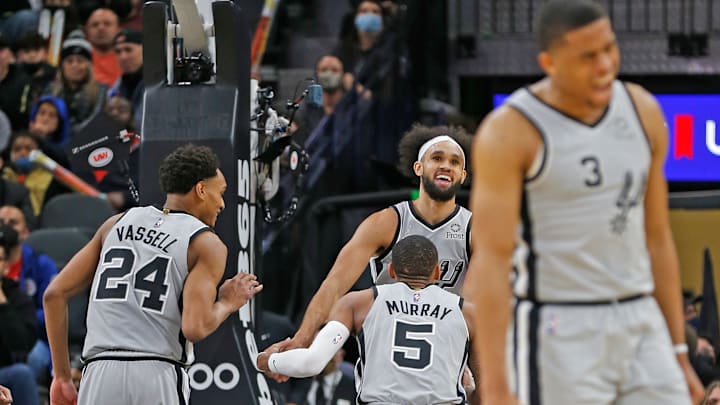A year of evaluation quickly turned into a flurry of transactions as San Antonio Spurs GM Brian Wright authored one of the busiest trade deadlines of any team -- let alone the busiest in franchise history.
These weren’t simple moves around the margins either. Wright made the hard choice to trade starting two-guard and fan-favorite Derrick White to Boston for a package highlighted by a 1st round pick and a future pick swap.
Then, in their first game after the deadline, the Spurs pulled out a resounding 15-point win on the road in Atlanta thanks to a historic performance from Dejounte Murray and stellar outings from the wing duo of Keldon Johnson and Devin Vassell. Parting ways with White played a significant factor in the breakout performance for Vassell, who entered the starting lineup with 20 points on 13 shots.
A question looming over San Antonio, its fans, and the NBA at large over the last several seasons has been ‘What are the Spurs building toward?’ Well, thanks to the decisive deadline transactions, the answer to that question is finally coming to fruition.
The Spurs are giving themselves flexibility to build their next contender
Internal development will always be supreme for the San Antonio Spurs organization. Empowering young men to grow personally and professionally within the development system is the key to San Antonio’s decades of success. That being said, the roster they entered the season with is capped.
Winning in the NBA requires superstar talent and cohesion around them. For all of his progress, Murray isn’t quite that at this point; and it may be unfair to project he’ll ever be. With that in mind, San Antonio needs all the flexibility it can get to acquire more top-level talent in the years to come.
There are three avenues to do so: Draft and develop a star, trade for one, or sign them outright in free agency. With their moves at the trade deadline, the Spurs now have wiggle room to do any of the three when the opportunity presents itself. To make sense of how they created that flexibility, we must first look at the trades they made at, and leading up to, the trade deadline.
